Lectures
Willem Boutu
Laboratoire Interactions, Dynamiques et Lasers (LIDYL), Université Paris-Saclay, CEA, France
High-order harmonic generation in solids
Seminar: "Shaping High Order Harmonic Emission from Crystals in Space and Time"
Willem Boutu is a research director at CEA Paris Saclay, at the LIDYL laboratory. He received his doctoral degree in 2007 in Attophysics from University Paris Sud in the group of Bertrand Carré at CEA Saclay. After a two year postdoctoral stay at the University of California, Berkeley, with Profs. Stephen Leone and Daniel Neumark, he came back to CEA, where he holds a permanent position since 2011. After studying electron dynamics in the gas phase, he recently shifted his interest to the study of strong field physics in the condensed phase. At the same time, he was moved towards a more applied approach to his research, which led to the development of EUV microscopy, a technique which allows to image matter at scales of a few tens of nanometers on a relatively small and simple setup. Since 2020, he leads a joint laboratory with a French SME to develop applications to EUV metrology.
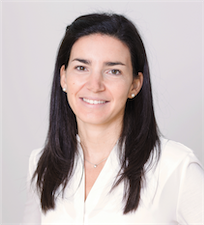
Francesca Calegari
Center for Free-Electron Laser Science CFEL, Deutsches Elektronen-Synchrotron DESY, Department of Physics
Universität Hamburg, Germany
Attosecond metrology of photoemission
Seminar: Charge migration in chiral molecules: a new route for attochemistry
Francesca Calegari leads the Attosecond Science group at DESY and she is Professor of Physics at Universität Hamburg. She received her doctoral degree from Politecnico di Milano in 2009. In 2011, she was appointed staff scientist at CNR-IFN and adjunct Professor of Physics at Politecnico di Milano. In 2014-2015, she was visiting scientist at MPSD, Hamburg, Germany, and she was awarded a European Research Council (ERC) Starting Grant. In 2016, she joined the Center for Free-Electron Laser Science at DESY. Amongst other distinctions, she received the ICO prize and the Ernst Abbe medal from the International Commission of Optics and she is a Fellow of Optica. The main focus of her research is to track and ideally control in real time the electron dynamics occurring in systems with increasing complexity from simple molecules to molecules of biological interest (including chiral molecules) and nanostructured materials.
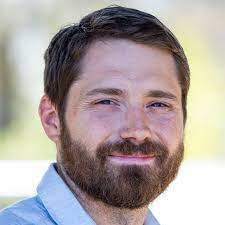
James Cryan
AMO Sciences Department, Linac Coherent Light Source, Stanford PULSE Institute, SLAC National Accelerator Laboratory, USA
Attosecond Science with X-ray Free Electron Laser Facilities
Seminar: "Probing Ultrafast Electron Dynamics with X-ray Free Electron Lasers"
James Cryan is a Senior Staff Scientist at SLAC National Accelerator Laboratory. He is the head of the AMO Science Department at LCLS, and he is a member of the Stanford PULSE Institute, where leads the attosecond science group. James' research focuses on studying electron dynamics on the attosecond time scale and developing tools to better probe these phenomena.
James completed his undergraduate education at The Ohio State University. He received his PhD in physics from Stanford University in 2012. From 2012 to 2014, Jameswas a Postdoctoral scholar in the Chemical Sciences Division at Lawrence Berkeley National Laboratory. In 2015 he joined SLAC as a Staff Scientist in the Stanford PULSE Institute. In 2012, James won the Spicer Young Investigator award for his thesis work at the LCLS. In 2020, James was elected a fellow to the American Physical Society.
Nonlinear light-matter interaction
Seminar: "Generation and Application of Attosecond-Pulse Trains"
Anne Harth received her doctoral degree (2013, Leibniz University Hannover) under the supervision of Prof. Uwe Morgner on non-collinear optical parametric chirped-pulse amplification techniques and few-cycle laser pulses. During her postdoctoral work with Prof. Anne L’Huillier (Lund University, Sweden) she studied the generation of attosecond pulse trains under tight focussing conditions and participated in experiments applying the method of reconstruction of attosecond beating by interference of two-photon transitions (RABBITT). At the division “Quantum Dynamics and Control”, directed by Prof. Thomas Pfeifer (Max-Planck Institute for Nuclear Physics, Heidelberg), she started a junior research group focussing on multi-photon transitions, expanding the RABBITT technique by combining unconventional colour fields. Since 2021, she is Professor at Aalen University and belongs to the research centre “Zentrum für Optische Technologien”. Her research interests include the fundamentals of nonlinear interactions of ultra-short pulses with various transparent materials and their time dependence.
Time-resolved ARPES: visualising the ultrafast evolution of electronic bands in solids
Seminar: Interplay of topology and correlations in the dynamics of quantum materials
Marino Marsi is professor at Paris-Saclay University, and a specialist in the electronic properties and ultrafast dynamics of quantum materials. He obtained a Ph.D. at the University of Wisconsin-Madison, and after a post-doctoral position at the Ecole Polytechnique Fédérale de Lausanne, he joined the Elettra laboratory in Trieste as a research scientist. In 2005 he was appointed full professor at the Laboratoire de Physique des Solides in Orsay, where he established a research group working on the study of quantum materials, using laser or synchrotron based experimental methods, mainly ultrafast photoemission. His interest rang from transient out-of-equilibrium topological states of matter to the study of phase separation and photoinduced phase transitions in correlated materials. He is recipient of the 2021 Friedel-Volterra award of the SFP and SIF.
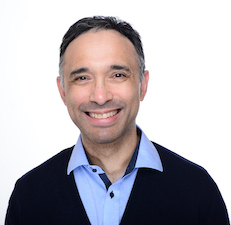
Robin Santra
Center for Free-Electron Laser Science CFEL, Deutsches Elektronen-Synchrotron DESY, Department of Physics
Universität Hamburg, Germany
Theory of X-ray–matter interaction
Seminar: "Femtosecond and attosecond dynamics in liquid water"
Robin Santra is a Professor of Theoretical Physics jointly appointed by DESY and the University of Hamburg. After studying physics at the University of Heidelberg in Germany and working as a postdoctoral research associate at JILA (University of Colorado, Boulder) and at ITAMP (Harvard-Smithsonian Center for Astrophysics), he joined Argonne National Laboratory in 2005 as a staff scientist. In 2008, he was appointed an Associate Professor Part-time in the Department of Physics at the University of Chicago. In 2010, Robin Santra joined the Center for Free-Electron Laser Science (CFEL) in Hamburg as head of the CFEL Theory Division. His research areas include X-ray-induced processes; ultrafast laser-driven phenomena; and applications of short-wavelength free-electron lasers. Robin Santra is a recipient of an IUPAP Young Scientist Prize and of a U.S. Presidential Early Career Award (PECASE). In 2014, he was elected a Fellow of the American Physical Society.
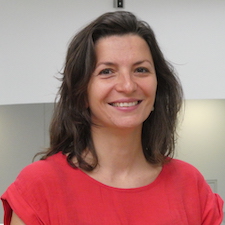
Caterina Vozzi
Institute for Photonics and Nanotechnologies (IFN), part of the National Research Council (CNR), Italy
HHG and attosecond technology
Seminar: HHG spectroscopy for the investigation of ultrafast dynamics in semiconductors
Caterina Vozzi has been the director of the Institute for Photonics and Nanotechnologies (CNR-IFN) of the Italian National Research Council (CNR) since January 2023. Research Director at CNR since 2019, she leads the Ultrafast dynamics in matter group at CNR-IFN in Milano (Italy). She obtained a PhD in Physics from Università Degli Studi di Milano in 2005. Her research activity has been devoted to the development of spectroscopy for application in atomic and molecular physics and attosecond science. ”. She is one of the pioneers of high-order harmonic spectroscopy and attosecond science with mid-IR driving sources, having made high-impact contributions to source development and applications. Her current research interests focus on the development of ultrafast spectroscopy for the study of dynamics in molecules of biological relevance and advanced materials for light harvesting and low-consumption electronics applications.
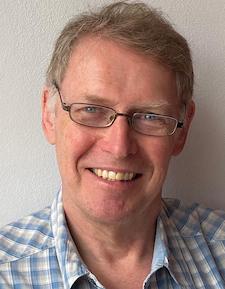
Marc Vrakking
Max Born Institute for Nonlinear Optics and Short Pulse Spectroscopy, Freie Universität Berlin, Germany
The Role of Quantum Entanglement in Attosecond Science
Seminar: TBD
Prof. Marc Vrakking completed his Phd at the University of California at Berkeley in 1992. After postdoc positions at the National Research Council (Ottawa) and the Vrije Universiteit Amsterdam, he led a scientific group at the FOM Institute for Atomic and Molecular Physics (AMOLF) in Amsterdam from 1997 to 2011. While at AMOLF, he initiated a research program focusing on the use of ultrashort (femtosecond and attosecond) extreme-ultra-violet (XUV) and X-ray laser pulses in studies of time-resolved atomic and molecular dynamics. In March 2010 he was appointed as director at the Max-Born Institute (MBI) in Berlin, and as a professor of physics at the Freie Universität Berlin. At MBI, Marc Vrakking is the head of Division A (“Attosecond Science”), and leads a team of researchers that are both further developing and applying techniques to study electron dynamics on attosecond timescales as well as nuclear dynamics on femtosecond timescales.
|


